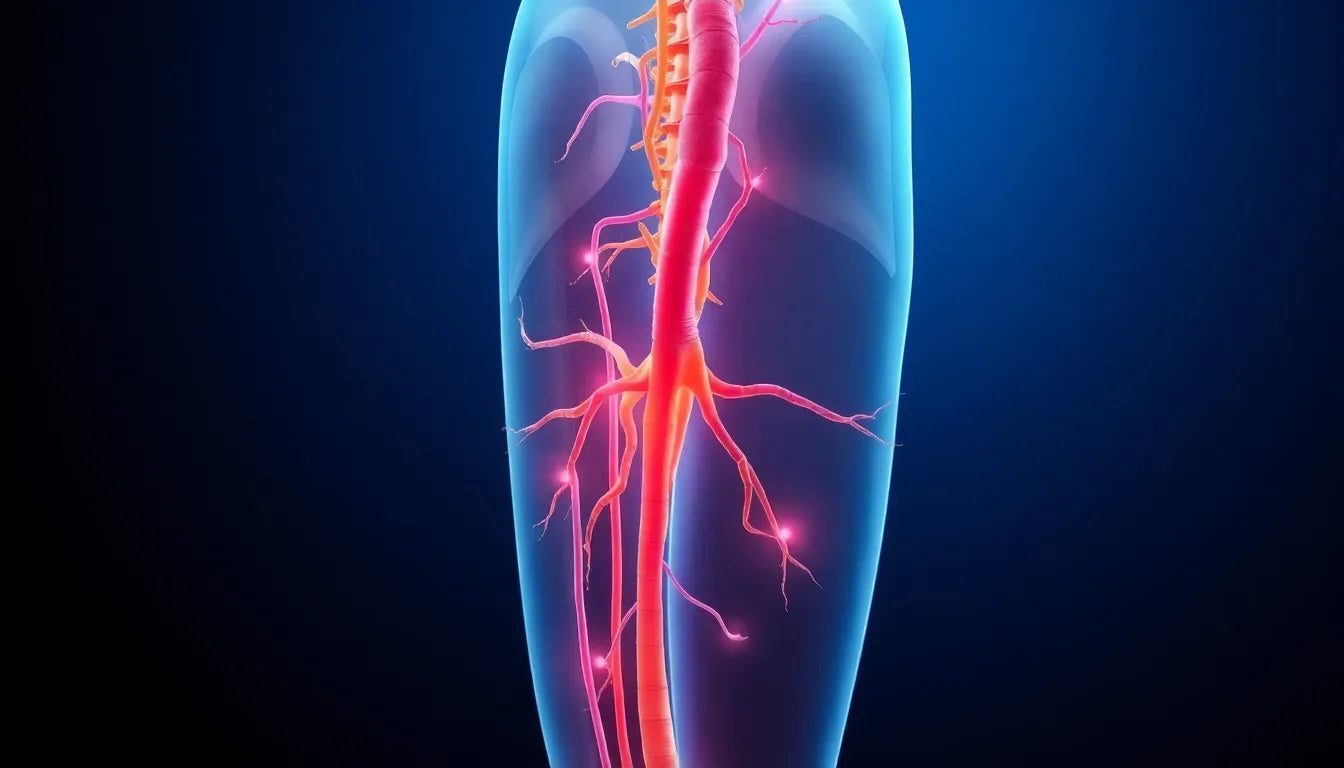False sciatica, a condition that often masquerades as its more well-known counterpart, true sciatica, can be a source of significant confusion and discomfort. While both conditions share similar symptoms, understanding the distinction between them is crucial for effective treatment. Many individuals suffer from nerve pain that they assume to be sciatica, only to discover that it originates from a different source entirely. This mix-up can lead to misdiagnosis and inappropriate treatment, prolonging discomfort and frustration.
Understanding false sciatica
False sciatica, also referred to as pseudo-sciatica, is a condition characterized by nerve pain that mimics that of true sciatica. However, unlike true sciatica, which is caused by compression of the sciatic nerve within the spinal column, false sciatica typically arises from issues outside the spinal column. This can include muscle tension or nerve entrapment, particularly involving muscles such as the gluteal and piriformis muscles. These muscles can compress the sciatic nerve, leading to symptoms similar to sciatica but with different underlying causes.
The key difference between false and true sciatica lies in the origin of the pain. While true sciatica is often a result of herniated discs or spinal stenosis causing nerve compression, false sciatica is usually due to peripheral nerve compression. This distinction is vital because it influences the treatment approach. Understanding the root cause helps in tailoring the right therapeutic strategies, which can significantly impact recovery and pain management.
The purpose of exploring false sciatica
The aim of this post is to delve into the world of false sciatica, shedding light on its symptoms, causes, and potential treatment options. By providing clarity on this often-misunderstood condition, we hope to guide those experiencing similar symptoms towards a more accurate diagnosis and effective relief. Whether you are dealing with persistent lower back pain or unexplained nerve discomfort, understanding false sciatica can be the first step towards finding the right solution.
In the following sections, we will explore the symptoms that distinguish false sciatica from its true counterpart, delve into the common causes, and discuss a range of treatment options. By unmasking the mystery of false sciatica, we aim to empower you with the knowledge needed to tackle this condition head-on and improve your quality of life.
Symptoms of false sciatica
False sciatica presents a unique set of symptoms that, while similar to true sciatica, have distinct characteristics. A common symptom is pain localized to the lower back and buttock, which may extend to the knee but typically does not go beyond it. Unlike true sciatica, which often involves pain radiating down the entire leg, false sciatica's pain tends to be more concentrated.
Individuals suffering from false sciatica often experience discomfort or pain when sitting or standing for extended periods. This discomfort can be particularly bothersome during long commutes or when working at a desk for hours. Interestingly, the pain associated with false sciatica may improve with movement, a factor that can help differentiate it from true sciatica, where movement can often exacerbate symptoms.
Comparison of symptoms: false sciatica vs. true sciatica
| Symptom | False Sciatica | True Sciatica |
|---|---|---|
| Pain location | Lower back, buttock, sometimes to knee | Lower back, buttock, down the leg to foot |
| Pain intensity | Intermittent, may improve with movement | Constant, often worsens with movement |
| Aggravating factors | Sitting or standing for long periods | Bending, lifting, prolonged standing |
Causes of false sciatica
The underlying causes of false sciatica often involve muscle and nerve interactions. Muscle tension, particularly in the gluteal and piriformis muscles, is a significant contributor. These muscles, when tight, can compress the sciatic nerve, leading to the characteristic pain of false sciatica. Additionally, nerve entrapment involving the medial branches of the superior cluneal nerve can further exacerbate symptoms.
Lifestyle factors also play a crucial role in the development of false sciatica. Poor posture, especially when sitting for long periods, can increase muscle tension and nerve compression. Similarly, wearing improper footwear can contribute to imbalances that affect posture and muscle tension. Excessive exercise or sudden physical activities can lead to muscle strain, further compounding the issue.
Understanding the anatomical connections
To visualize the anatomical connections and common causes of nerve compression leading to false sciatica, consider the following infographic:

This infographic highlights the intricate relationship between muscle tension, nerve pathways, and lifestyle factors. By understanding these connections, individuals can better identify potential triggers and take proactive steps to alleviate symptoms.
In the next section, we will delve into various treatment options available for managing false sciatica. From conservative approaches to medical interventions, understanding these options can empower individuals to make informed decisions about their healthcare and find relief from this often-misunderstood condition.
Treatment and management of false sciatica
Addressing false sciatica involves a combination of conservative treatments and, in some cases, medical interventions. The goal is to alleviate pain, improve function, and prevent recurrence by targeting the underlying causes of muscle tension and nerve entrapment.
Conservative treatments
For many individuals, conservative treatments are the first line of defense against false sciatica. Physiotherapy and chiropractic care are highly effective in relieving muscle tension and improving posture. These therapies focus on manual manipulation and targeted exercises to restore balance and flexibility, reducing pressure on the sciatic nerve.
Incorporating exercises such as yoga can further enhance muscle strength and flexibility. Yoga poses that stretch the gluteal and piriformis muscles can be particularly beneficial, as they help relieve tension and improve circulation, thereby alleviating symptoms.
Medical interventions
When conservative measures are insufficient, medical interventions may be considered. Anti-inflammatory medications and painkillers can provide temporary relief from pain and inflammation, allowing individuals to engage more effectively in physical therapy. However, it is crucial to use these medications under the guidance of a healthcare professional to avoid potential side effects.
A personalized treatment plan is essential, as it considers individual symptoms, lifestyle factors, and overall health. This tailored approach ensures that the treatment is effective and sustainable, promoting long-term relief and preventing future episodes of false sciatica.
Visual guide to exercises
To support individuals in managing false sciatica at home, here is a step-by-step visual guide to simple exercises and stretches:

These exercises are designed to target the muscles commonly involved in false sciatica, promoting flexibility and reducing tension. Regular practice can significantly improve symptoms and enhance overall well-being.
Frequently Asked Questions
What is the main difference between false sciatica and true sciatica?
The primary difference lies in the origin of the pain. False sciatica is typically caused by muscle tension or nerve entrapment outside the spinal column, whereas true sciatica often results from compression of the sciatic nerve within the spinal column, such as from a herniated disc.
Can false sciatica be prevented?
Yes, preventive measures can be effective. Maintaining good posture, engaging in regular exercise, and ensuring proper ergonomics at work and home can help prevent muscle tension and nerve compression. Additionally, wearing supportive footwear can reduce strain on the lower back and legs.
How is false sciatica diagnosed?
Diagnosis typically involves a physical examination by a healthcare professional, who will assess symptoms and perform specific tests to differentiate false sciatica from other conditions. Imaging tests such as X-rays or MRIs may be used to rule out true sciatica or other spinal issues.
What lifestyle changes can help manage false sciatica?
Incorporating regular stretching and strengthening exercises into your routine can be beneficial. Paying attention to posture, especially when sitting for long periods, and taking regular breaks to move around can also help. Additionally, managing stress levels through relaxation techniques may reduce muscle tension.
When should I seek professional medical advice for false sciatica?
If symptoms persist despite self-care measures, or if they worsen over time, it is advisable to seek professional medical advice. A healthcare provider can offer a comprehensive evaluation and recommend appropriate treatment options tailored to your specific needs.


















